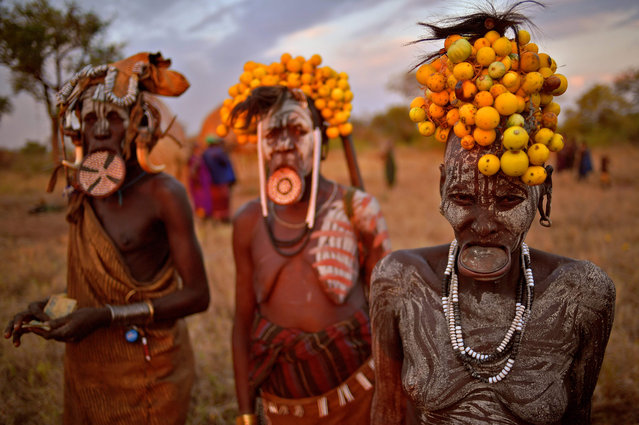
Women from the Mursi tribe pose for a photo in the Mago National park near Jinka in Ethiopia's southern Omo Valley region on September 21, 2016. The Mursi are a Nilotic pastoralist ethnic group which number around 10,000 people in Ethiopia. Some Mursi women choose to wear a saucer lip plate (dhebi a tugoin). A girls lower lip is cut when she reaches the age of 15 or 16. The wound is then stretched over time to accomodate a large clay plate. The Mursi tribe are one of the few tribes left who continue this practise. The construction of a sugar factory in Mago National Park has begun to change the way of life for many Mursi as they begin to leave their traditional way of life to work at the factory. Human rights groups also report that the Mursi fear eviction by the Ethiopian government from a large area of the park altogether. The construction of the Gibe III dam, the third largest hydroelectric plant in Africa, and large areas of very “thirsty” cotton and sugar plantations and factories along the Omo river are impacting heavily on the lives of tribes living in the Omo Valley who depend on the river for their survival and way of life. Human rights groups fear for the future of the tribes if they are forced to scatter, give up traditional ways through loss of land or ability to keep cattle as globalisation and development increases. (Photo by Carl De Souza/AFP Photo)
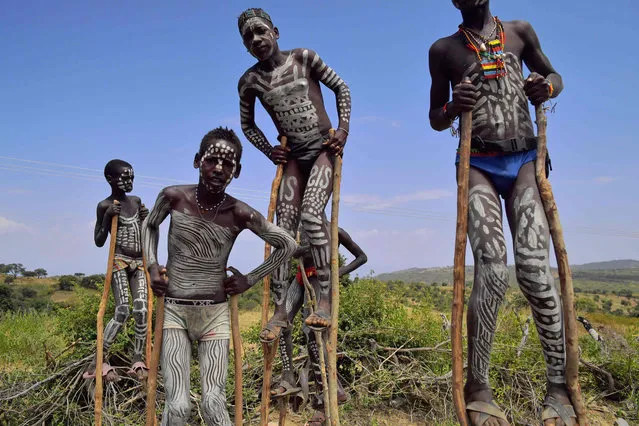
Young boys from the Mursi tribe walk on stilts in Ethiopia's southern Omo Valley region, near Jinka, on September 22, 2016. The Mursi are a Nilotic pastoralist ethnic group in Ethiopia. The construction of the Gibe III dam, the third largest hydroelectric plant in Africa, and large areas of very “thirsty” cotton and sugar plantations and factories along the Omo river are impacting heavily on the lives of tribes living in the Omo Valley who depend on the river for their survival and way of life. Human rights groups fear for the future of the tribes if they are forced to scatter, give up traditional ways through loss of land or ability to keep cattle as globalisation and development increases. (Photo by Carl De Souza/AFP Photo)
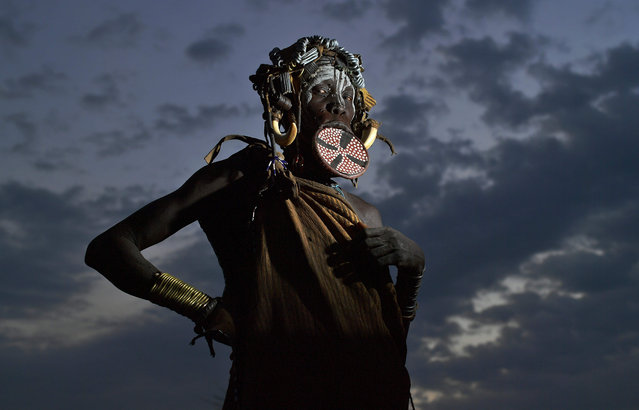
A woman from the Mursi tribe poses for a photo in the Mago National park near Jinka in Ethiopia's southern Omo Valley region on September 21, 2016. The Mursi are a Nilotic pastoralist ethnic group which number around 10,000 people in Ethiopia. Some Mursi women choose to wear a saucer lip plate (dhebi a tugoin). A girls lower lip is cut when she reaches the age of 15 or 16. The wound is then stretched over time to accomodate a large clay plate. The Mursi tribe are one of the few tribes left who continue this practise. (Photo by Carl De Souza/AFP Photo)
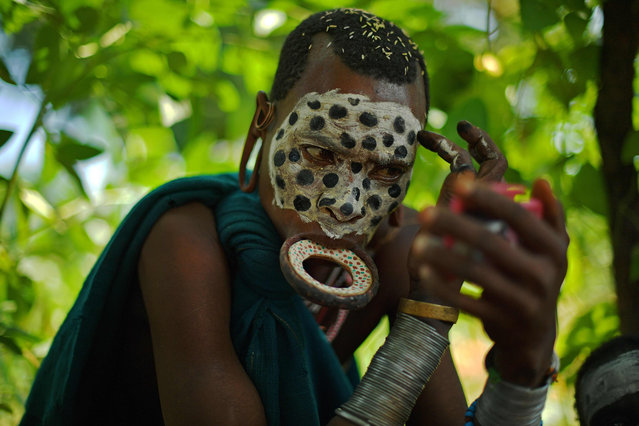
A woman from the Suri tribe wearing a lip plate paints her face in Ethiopia’s southern Omo Valley region near Kibbish on September 25, 2016. The Suri are a pastoralist Nilotic ethnic group in Ethiopia. (Photo by Carl De Souza/AFP Photo)
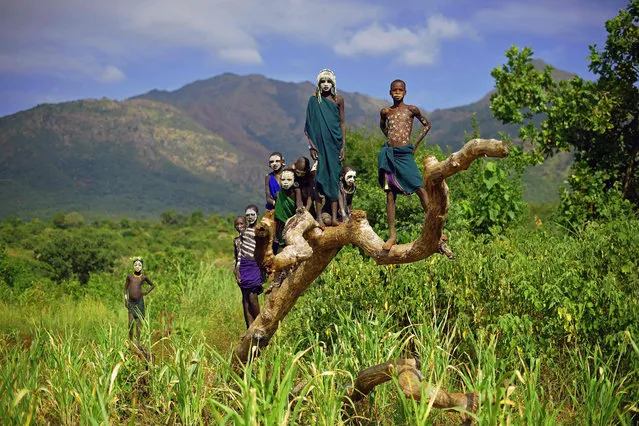
Children from the Suri tribe pose in Ethiopia’s southern Omo Valley region near Kibbish on September 25, 2016. The Suri are a pastoralist Nilotic ethnic group in Ethiopia. (Photo by Carl De Souza/AFP Photo)
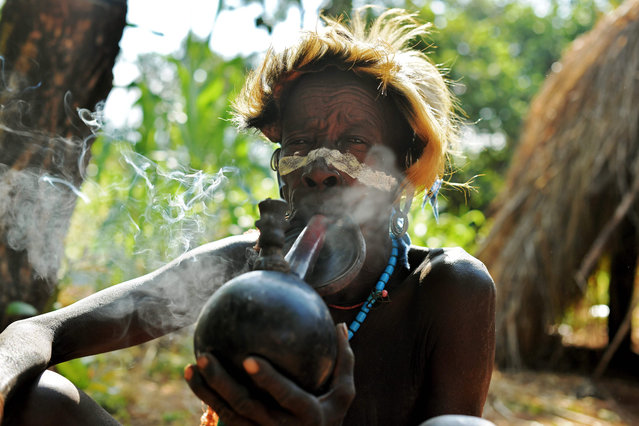
An elderly woman from the Suri tribe smokes a pipe in Ethiopia's southern Omo Valley region near Kibbish on September 25, 2016. The Suri are a pastoralist Nilotic ethnic group in Ethiopia. (Photo by Carl De Souza/AFP Photo)
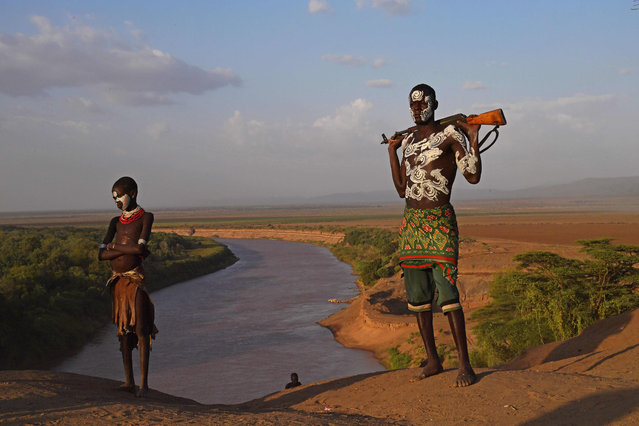
Members from the Karo tribe pose in front of the Omo river in Ethiopia’s southern Omo Valley region on September 23, 2016. The Karo are a Nilotic ethnic group in Ethiopia famous for their body painting. They are also one of the smallest tribes in the region. (Photo by Carl De Souza/AFP Photo)
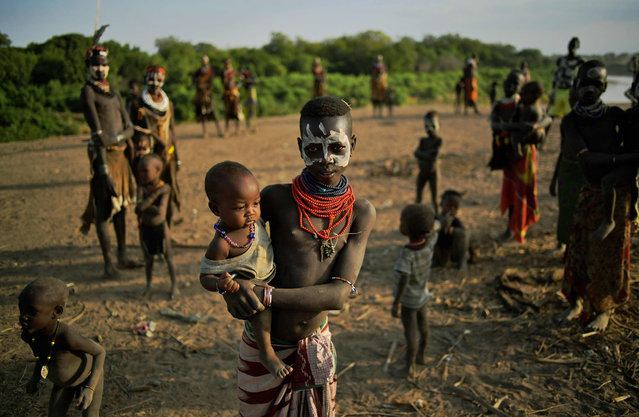
Members of the Karo tribe pose in front of the Omo river in Ethiopia’s southern Omo Valley region on September 23, 2016. The Karo are a Nilotic ethnic group in Ethiopia famous for their body painting. They are also one of the smallest tribes in the region. (Photo by Carl De Souza/AFP Photo)
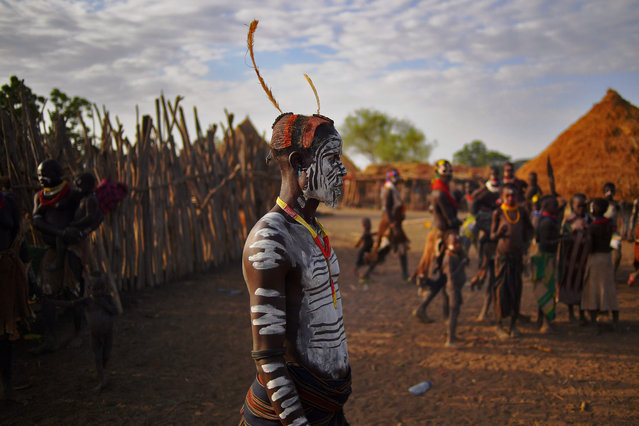
Members of the Karo tribe pose in Ethiopia’s southern Omo Valley region on September 23, 2016. The Karo are a Nilotic ethnic group in Ethiopia famous for their body painting. They are also one of the smallest tribes in the region. (Photo by Carl De Souza/AFP Photo)
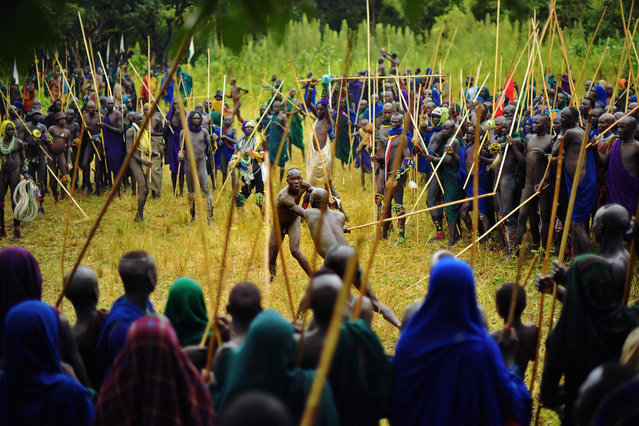
Men from the Suri tribe take part in a “Donga” or stick fight in Ethiopia's southern Omo Valley region near Kibbish on September 24, 2016. Traditionally the fight is a way to impress women and find a wife. The fights are brutal and sometimes result in death. The combatants fight with little or no clothing and sometimes no protection at all. The Suri are a pastoralist Nilotic ethnic group in Ethiopia. (Photo by Carl De Souza/AFP Photo)
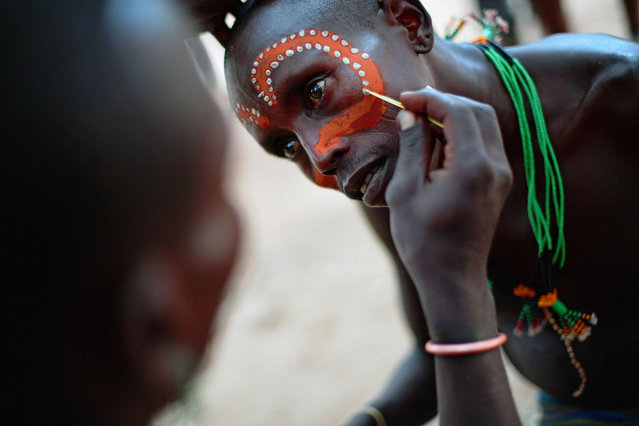
A Hamar man has his face painted before a bull jumping ceremony in Ethiopia’s southern Omo Valley region near Turmi on September 19, 2016. The Hamar are a Nilotic ethnic group in Ethiopia. Bull jumping has been practised by the Hamars for thousands of years. The ceremony is a coming of age tradition which allows young men to marry. The man has to run across the backs of bulls which have been lined up, 4 times. If he falls through the row of bulls he is to start again until he finishes without falling. If the man fails to properly “jump the bulls” he risks humiliation and being cast out by his village as well as never being able to marry in the future. Before the ceremony women line up to be whipped by men holding sticks to prove their devotion to the men. (Photo by Carl De Souza/AFP Photo)

Hamar women dance before a bull jumping ceremony in Ethiopia's southern Omo Valley region near Turmi on September 19, 2016. The Hamar are a Nilotic ethnic group in Ethiopia. The construction of the Gibe III dam, the third largest hydroelectric plant in Africa, and large areas of very “thirsty” cotton and sugar plantations and factories along the Omo river are impacting heavily on the lives of tribes living in the Omo Valley who depend on the river for their survival and way of life. Human rights groups fear for the future of the tribes if they are forced to scatter, give up traditional ways through loss of land or ability to keep cattle as globalisation and development increases. (Photo by Carl De Souza/AFP Photo)
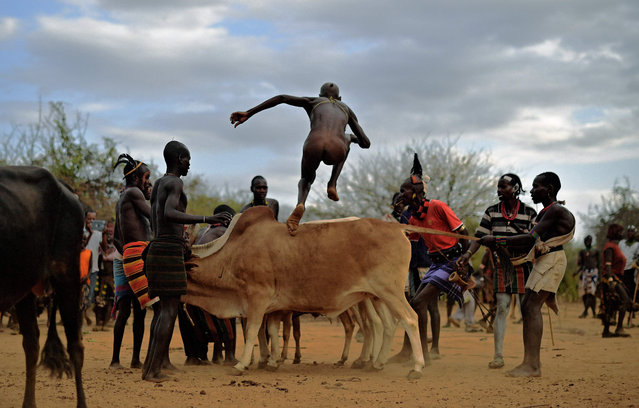
A man from the Hamar tribe takes part in a bull jumping ceremony in Ethiopia's southern Omo Valley region near Turmi on September 19, 2016. The Hamar are a Nilotic ethnic group in Ethiopia. Bull jumping has been practised by the Hamars for thousands of years. The ceremony is a coming of age tradition which allows young men to marry. The man has to run across the backs of bulls which have been lined up, 4 times. If he falls through the row of bulls he is to start again until he finishes without falling. If the man fails to properly “jump the bulls” he risks humiliation and being cast out by his village as well as never being able to marry in the future. Before the ceremony women line up to be whipped by men holding sticks to prove their devotion to the men. (Photo by Carl De Souza/AFP Photo)
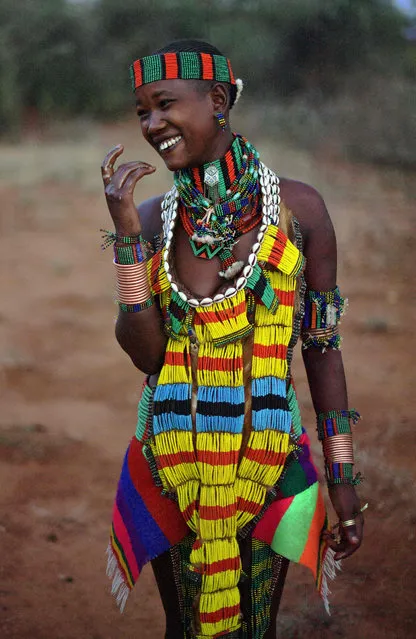
A woman from the Bena tribe eats honey collected from a tree in Ethiopia's southern Omo Valley region near Turmi on September 20, 2016. The Bena are a Nilotic ethnic group in Ethiopia and known for keeping bees. (Photo by Carl De Souza/AFP Photo)
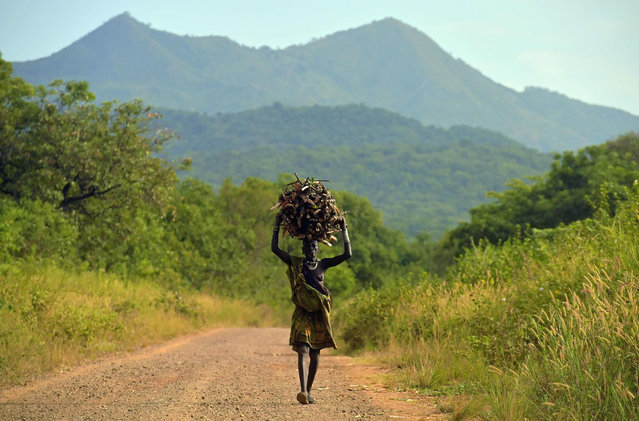
A woman from the Suri tribe carries firewood on her head in Ethiopia's southern Omo Valley region, near Kibbish, on September 25, 2016. The Suri are a pastoralist Nilotic ethnic group in Ethiopia. (Photo by Carl De Souza/AFP Photo)
02 Oct 2016 08:45:00,
post received
0 comments
